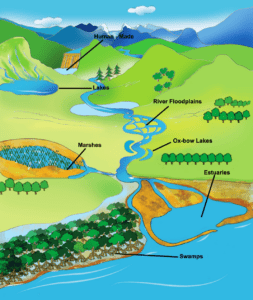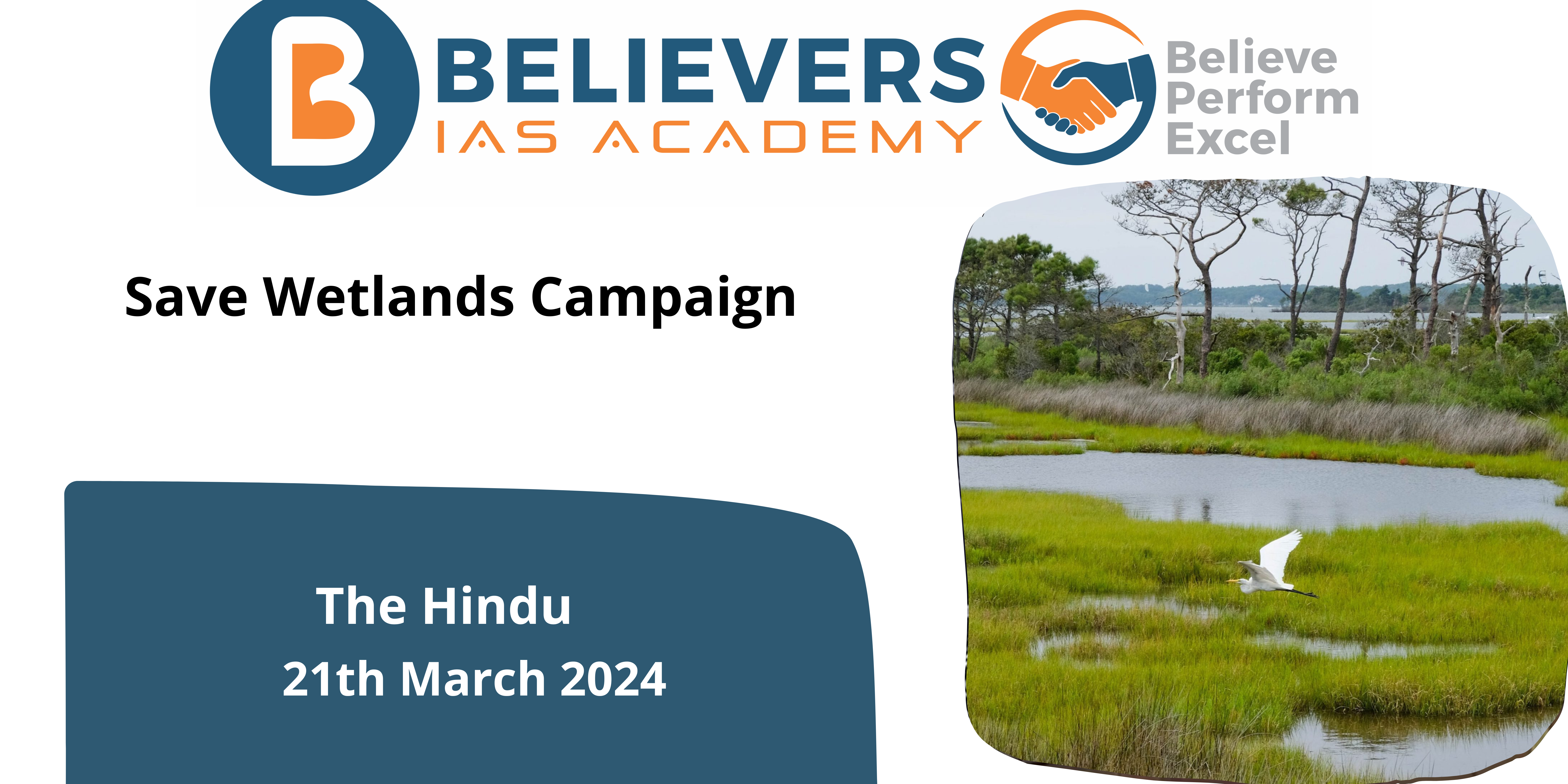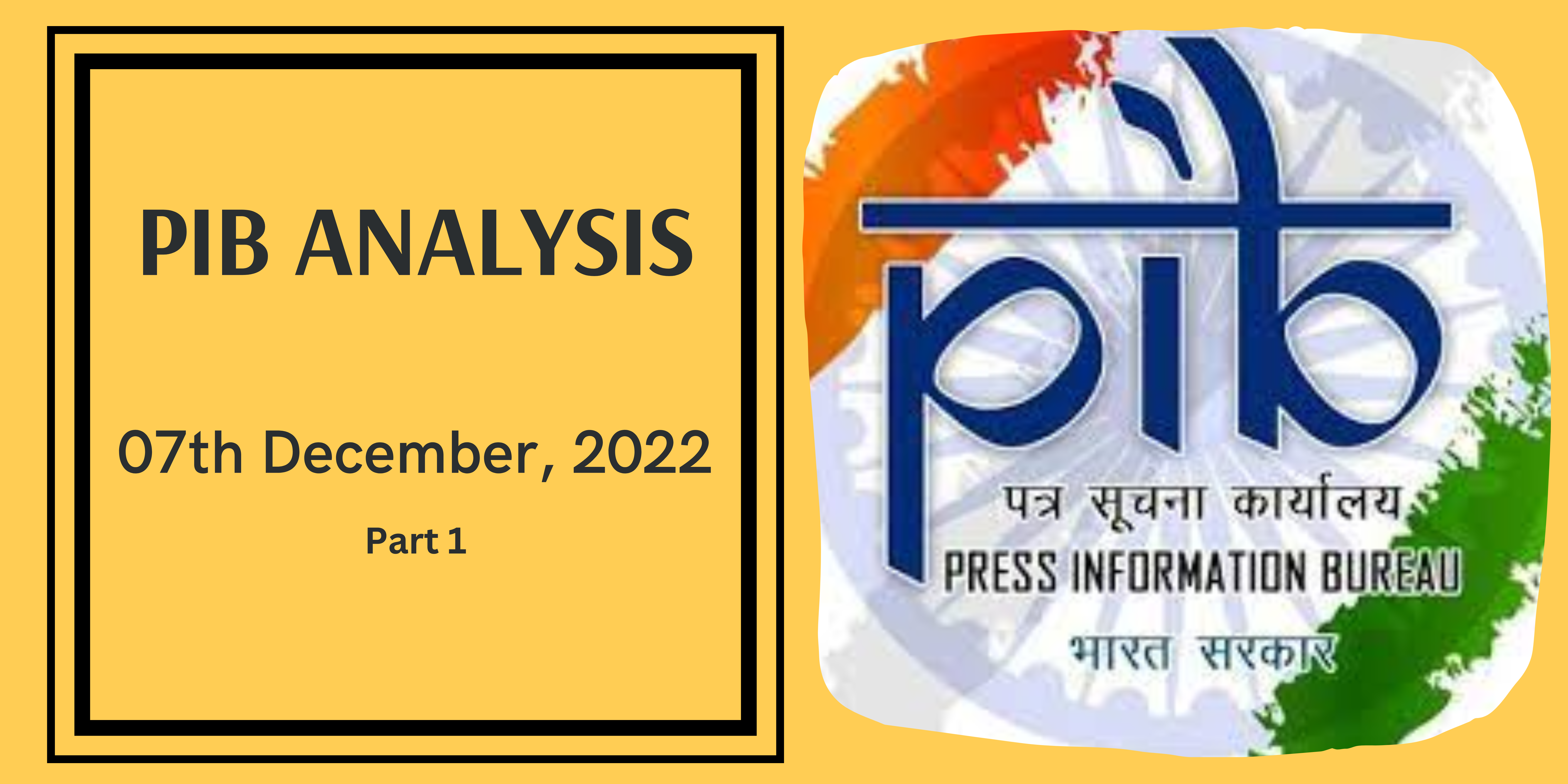Save Wetlands Campaign
Context:
The Save Wetlands Campaign recently got concluded. It was structured on a “whole of society” approach for wetlands conservation, enabling affirmative actions for wetlands conservation at all levels.
Relevance:
GS-03 (Conservation)
About the Save Wetlands Campaign :
- The ‘Save Wetlands Campaign (SWC)’ was launched by Ministry of Environment, Forest and Climate Change on the occasion of World Wetlands Day (WWD) 2023.
- As part of the campaign, more than 6400 events were conducted throughout the year to engage citizens and sensitize them to wetlands management and conservation.
- These events included wetland cleaning drives, painting competitions, pledge-taking ceremonies, sensitization workshops and seminars, involving Wetland Mitras and school & college students across different states/UTs.
What are Wetlands?
- Wetlands are areas where water covers the soil, or is present either at or near the surface of the soil all year or for varying periods of time during the year, including during the growing season.
- These are areas where water is the primary factor controlling the environment and the associated plant and animal life.

How are they formed?
- Rise in Sea levels: Flooding of coastal lowlands creates broad coastal marshes that are protected from wave action by barrier islands or reefs. Coastal wetlands also form when rivers deposit sediment as they reach the ocean.
- Erosion and deposition: River floodplains develop through erosion processes and through deposition of sediment on adjacent lands during floods. Wetlands form on floodplains where periodic flooding or high water tables provide sufficient moisture. These “riparian” wetlands may undergo constant change as rivers and streams form new channels and when floods scour the floodplain or deposit new material.
- Glaciers: Glaciers dammed rivers, scoured valleys, and reworked floodplains, resulting in the formation of extensive wetlands. Additionally, numerous smaller wetlands were created as large blocks of ice, remnants of receding glaciers, created pits and depressions in the terrain. If these depressions had inadequate drainage or intersected the water table, many of them subsequently became filled with water.
- Other forces of nature:
- Wind action: In the sand hills of Nebraska, the depressions formed by winds have become wetlands.
- Sink holes: Areas where perculating water has dissolved bedrock.
- Earthquakes : Earthquakes can create wetlands by damming rivers or causing land to drop down near the water table or shoreline.
- Waterfalls : Waterfalls often have lush wetland vegetation under and around them, sustained by the spray.
- Man-made: Some “incidental” wetlands are formed when highway and dam construction, irrigation projects, or other human activities alter drainage patterns or impound water. Government agencies, conservation groups and individuals intentionally create and restore wetlands, and research to improve restoration methods continues.
- Beaver lodge: Beavers once played a more significant role in forming smaller inland wetlands by damming rivers and streams. Beaver dams may last in excess of 100 years, though many are shorter-lived.
Significance:
- Carbon Sequestration: Wetlands store carbon within their vegetation and soil, mitigating climate change by preventing the release of carbon dioxide into the atmosphere.
- Climate Resilience: Wetlands act as natural buffers against disasters like floods, reducing risks and protecting communities.
- Biodiversity Hotspots: These habitats attract millions of migratory birds annually, providing crucial breeding and feeding grounds.
- Cultural and Touristic Value: Wetlands hold cultural significance and are popular destinations for eco-tourism and recreation.
Initiatives:
- Ramsar Convention: A global treaty for the conservation and sustainable use of wetlands, promoting international cooperation.
- World Wetlands Day: An annual event celebrating wetland ecosystems and raising awareness about their conservation.
- Montreux Record: A register highlighting wetland sites facing ecological threats, fostering conservation efforts.
- Indian Initiatives:
- Wetlands (Conservation and Management) Rules, 2017: Govern the protection and management of wetlands, establishing state-level bodies and a National Wetland Committee.
- Ministry of Environment, Forest and Climate Change (MoEFCC) Action Plan: Supports wetland conservation through various schemes and initiatives.
- Expansion of Ramsar Sites: India has added 11 new wetlands to the Ramsar list, enhancing protection and recognition.
New Ramsar Sites:
- Odisha – Tampara Lake and Hirakud Reservoir, Ansupa Lake
- Madhya Pradesh – Yashwant Sagar
- Tamil Nadu – Chitrangudi Bird Sanctuary, Suchindram Theroor Wetland Complex, Vaduvur Bird Sanctuary and Kanjirankulam Bird Sanctuary
- Maharashtra – Thane Creek
- Jammu and Kashmir – Hygam Wetland Conservation Reserve and Shallbugh Wetland Conservation Reserve



